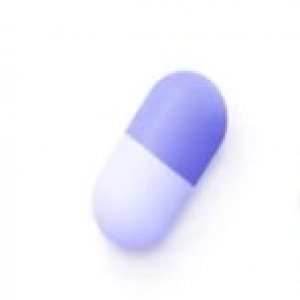 Welcome
Welcome
“May all be happy, may all be healed, may all be at peace and may no one ever suffer."
- A
- B
- C
- D
- E
- F
- G
- H
- I
- J
- K
- L
- M
- N
- O
- P
- Q
- R
- S
- T
- U
- V
- W
- X
- Y
- Z
Lenalidomide - Brands
Lenalidomide is an analogue of thalidomide with immunomodulatory, antiangiogenic, and antineoplastic properties. Cellular activities of Lenalidomide are mediated through its target cereblon, a component of a cullin ring E3 ubiquitin ligase enzyme complex. In vitro, in the presence of drug, substrate proteins (including Aiolos, Ikaros, and CK1α) are targeted for ubiquitination and subsequent degradation leading to direct cytotoxic and immunomodulatory effects. Lenalidomide inhibits proliferation and induces apoptosis of certain hematopoietic tumor cells including MM, mantle cell lymphoma, and del (5q) myelodysplastic syndromes in vitro. Lenalidomide causes a delay in tumor growth in some in vivo nonclinical hematopoietic tumor models including MM. Immunomodulatory properties of Lenalidomide include increased number and activation of T cells and natural killer (NK) cells leading to direct and enhanced antibody-dependent cell-mediated cytotoxicity (ADCC) via increased secretion of interleukin-2 and interferon-gamma, increased numbers of NKT cells, and inhibition of pro-inflammatory cytokines (e.g., TNF-α and IL-6) by monocytes. In MM cells, the combination of Lenalidomide and Dxamethasone synergizes the inhibition of cell proliferation and the induction of apoptosis.
Absorption: Lenalidomide is rapidly absorbed following oral administration. Following single and multiple doses of Lenalidomide in patients with MM or MDS, the maximum plasma concentrations occurred between 0.5 and 6 hours post-dose. The single and multiple dose pharmacokinetic disposition of Lenalidomide is linear with AUC and Cmax values increasing proportionally with dose. Multiple doses of Lenalidomide at the recommended dosage does not result in drug accumulation. Administration of a single 25 mg dose of Lenalidomide with a high-fat meal in healthy subjects reduces the extent of absorption, with an approximate 20% decrease in AUC and 50% decrease in Cmax. In the trials where the efficacy and safety were established for Lenalidomide, the drug was administered without regard to food intake. Lenalidomide can be administered with or without food. The oral absorption rate of Lenalidomide in patients with MCL is similar to that observed in patients with MM or MDS.
Distribution: In vitro [14 C]-Lenalidomide binding to plasma proteins is approximately 30%. Lenalidomide is present in semen at 2 hours (1379 ng/ejaculate) and 24 hours (35 ng/ejaculate) after the administration of Lenalidomide 25 mg daily.
Elimination: The mean half-life of Lenalidomide is 3 hours in healthy subjects and 3 to 5 hours in patients with MM, MDS or MCL.
Metabolism: Lenalidomide undergoes limited metabolism. Unchanged Lenalidomide is the predominant circulating component in humans. Two identified metabolites are 5¬ Hydroxy-Lenalidomide and N-Acetyl Lenalidomide; each constitutes less than 5% of parent levels in circulation.
Excretion: Elimination is primarily renal. Following a single oral administration of [14 C]-Lenalidomide 25 mg to healthy subjects, approximately 90% and 4% of the radioactive dose was eliminated within ten days in urine and feces, respectively. Approximately 82% of the radioactive dose was excreted as Lenalidomide in the urine within 24 hours. Hydroxy-Lenalidomide and N-Acetyl-Lenalidomide represented 4.6% and 1.8% of the excreted dose, respectively. The renal clearance of Lenalidomide exceeds the glomerular filtration rate.
To be happy, beautiful, healthy, wealthy, hale and long-lived stay with DM3S.
